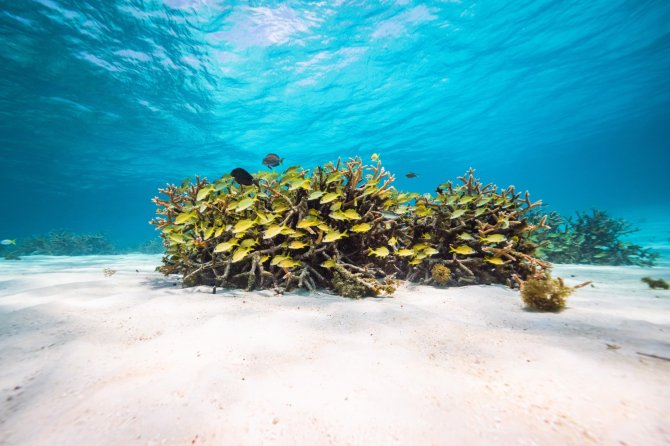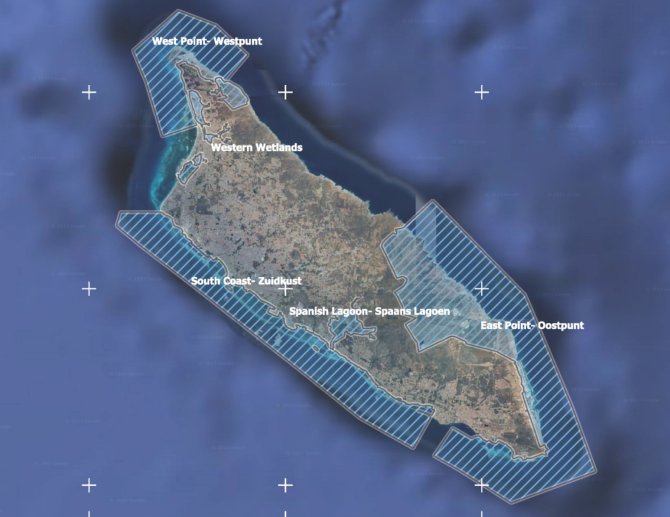Aruba has seen a major increase of its wetland areas protected under the Ramsar Convention of Wetlands. On 10 November 2023 the Aruban Minister of Nature announced the official designation of four new Ramsar sites. With also the extension of Spaans Lagoen, the only existing Ramsar site since 1980, the total area protected under the Convention on the island has increased from 70 to no less than 14,408 hectares.
The Aruban Minister of Nature, Ursell Arends, made this news publicly known during the symposium for Nature-Based Solutions for Ecosystem Restoration and Conservation on the Dutch Caribbean Islands. This event was organised by the Dutch Caribbean Nature Alliance (DCNA) and Fundacion Parke Nacional Aruba. The news was welcomed by Her Royal Highness Princess Beatrix, Patroness of the DCNA, the Governor of Aruba, the Prime Minister of Aruba, nature NGOs and other stakeholders.

René Henkens, senior ecologist at Wageningen Environmental Research who led the designation process: "Although these areas are no longer pristine, they still contain impressive biodiversity values. Not least because of the many years of passionate efforts of, among others, the nature conservation NGOs on the island. Their contribution was essential to achieve this result. I am convinced that this milestone will help in our ambition to restore the ecosystem to its full glory."
Conservation of wetlands
The Ramsar Convention on Wetlands is an intergovernmental treaty, currently endorsed by almost 90% of UN member states. It has been in force since 1975 and provides a framework for the conservation and wise use of wetlands and their resources.
Aruba's four new Ramsar sites are locally known as Western Wetlands, Westpunt, Zuidkust and Oostpunt. Some 70 hectares of the Spaans Lagoen area were already designated in 1980, but this site has now been extended to 259 hectares, including its water catchment area. All these sites already are subject to major ecological restoration and conservation efforts, among which coral and mangrove restoration within the EU-funded Turning the Tide project. "Their official Ramsar designation was therefore one of the highlights of the symposium", Henkens said.
The wetlands and their habitats
Spaans Lagoen (Spanish Lagoon) represents one of the largest natural inland bays in the Caribbean. Its narrow coastal inlet is some two kilometres long. This site is fringed with tidal mudflats and well-developed mangroves and forms an important nursery habitat for many species of reef fish, crustaceans and birds.
Western Wetlands measures 392 hectares and comprises five salt lakes, locally known as Saliñas. Although the marshes are localised between high-rise hotels and residential areas they form an important stopover site for hundreds of birds that migrate between the north and south American continents.

Westpunt (West Point) measures 2185 hectares and comprises varying coastal habitats like beaches, limestone terraces, coral reefs, seagrass beds, sand dunes, seasonal wetlands and shallow and deeper marine waters. Each of these habitats form the home of locally or globally endangered wildlife.
Zuidkust (South Coast) measures 3975 hectares and comprises the islands largest stand of mangrove forest, dense cover seagrass beds, fairly healthy coral reefs, sea turtle nesting beaches and the islands main chain of reef islets. A 2019 coral reef baseline study revealed that this site is the most important coral recruitment area of Aruba.
Oostpunt (East Point) measures 7597 hectares. It is a mainly marine site that curves around the eastern tip of Aruba. A substantial part of the terrestrial Arikok National Park is incorporated within its boundaries as it represents the water catchment of Fontein, the island's only substantial, natural and permanent freshwater source. The site encompasses reef islets with breeding colonies of no less than 10 tern species.






